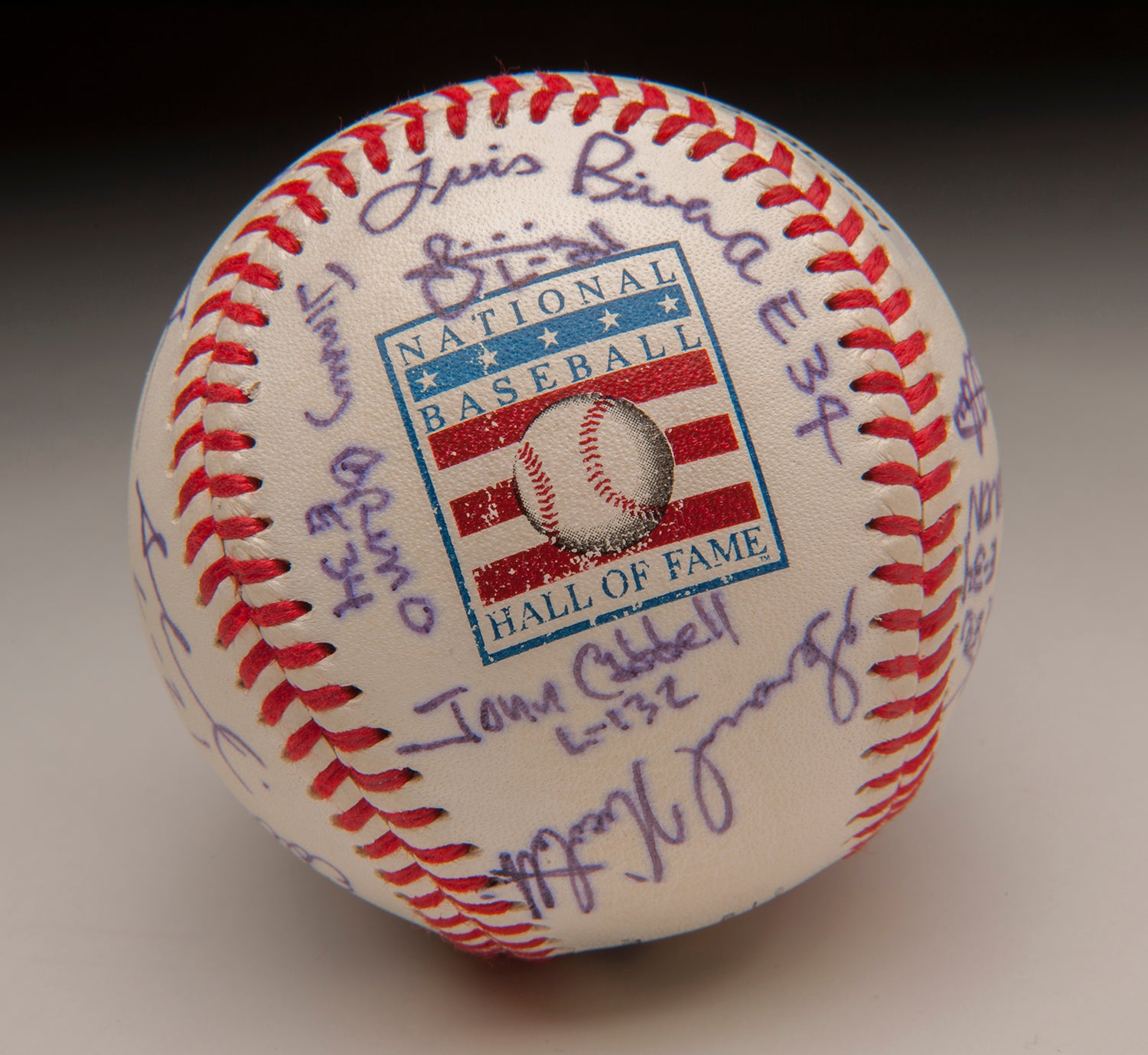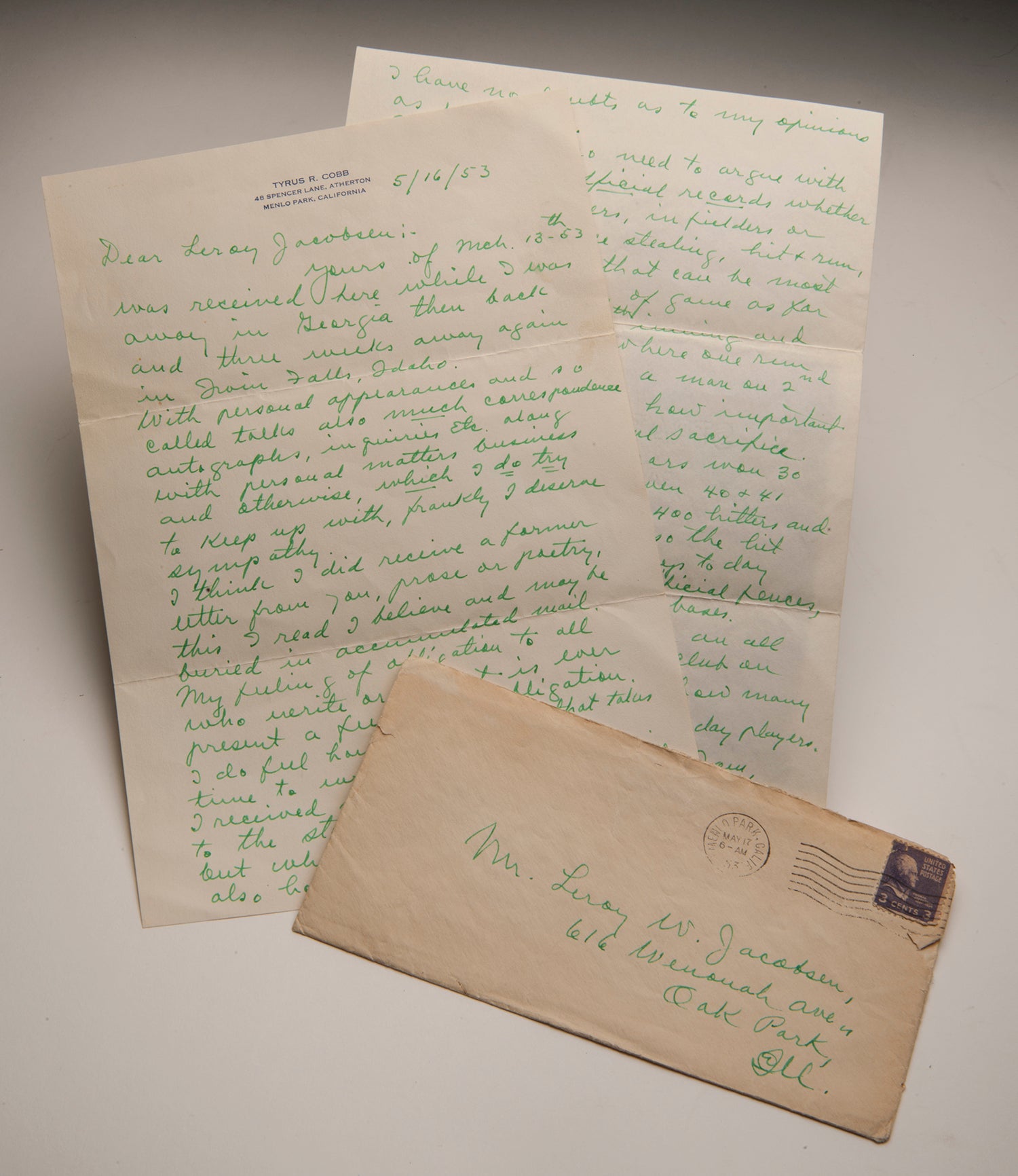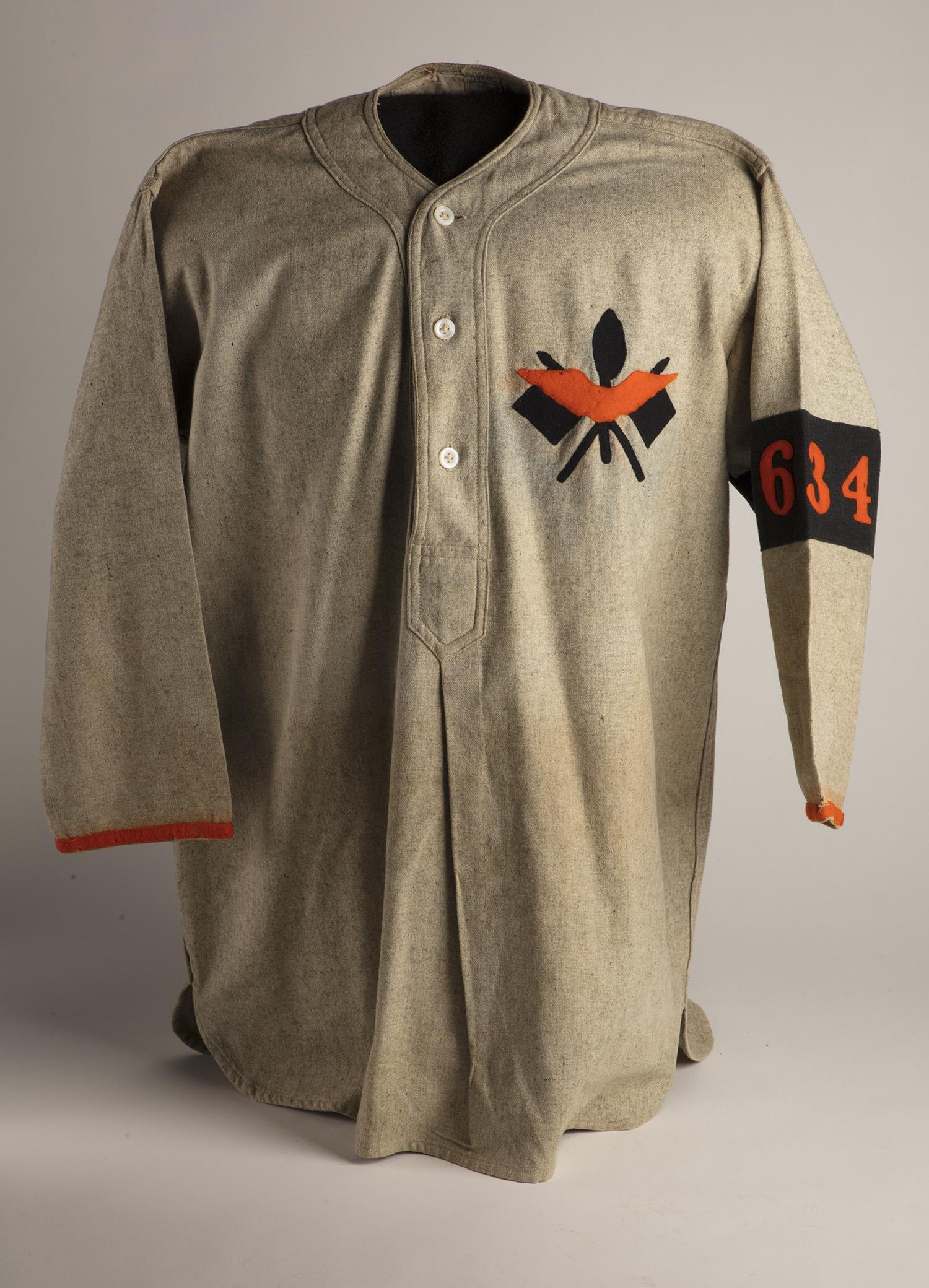- Home
- Our Stories
- #Shortstops: World War I history preserved at Museum through uniform donation
#Shortstops: World War I history preserved at Museum through uniform donation
One hundred years ago, only four months after the United States declared war on Germany, a young Walter Howard Kaltreider enlisted in “the war to end all wars.” Today, thanks to a generous donation, a rare baseball uniform he wore while representing his military outfit now calls Cooperstown home.
Only 22 years old, Kaltreider was cigar maker in Red Lion, Pa., tall with a medium build and light colored hair, when, with World War I raging in Western Europe, he enlisted in the Army in Columbus, Ohio, on Aug. 16, 1917. After less than a month with the 100th Aero Squadron at Kelly Field in Texas, he was transferred to the 634th Aero Supply Squadron in Middletown, Pa., a Signal Corps post where he would spend more than a year.
While in Middletown, about 22 miles from his hometown of Red Lion, Kaltreider, an amateur pitcher in his youth who had acquired the nickname “Rube” after Hall of Fame hurler Rube Waddell, would find himself on occasion sporting baseball togs instead of his usual military uniform. And family lore has it that he was quite a successful moundsman.
Hall of Fame Membership
There is no simpler, and more essential, way to demonstrate your support than to sign on as a Museum Member.
Atop a pitching mound, “Rube” would throw for the “Middletown Aviators,” a squad a local newspaper claimed was composed of several college stars. This military outfit faced local amateur competition such as the St. Mary’s Catholic Club of Steelton and the Rescue Hose Company of Middletown.
With the end of WWI coming on Nov. 11, 1918, Kaltreider was honorably discharged on Dec. 17, 1918. After the war, the Army veteran would founded Kaltreider Construction, a business he remained active in until his death at the age of 76 on July 21, 1971.
Recently, a grandson, Ed Kaltreider, donated his grandfather’s well-preserved military baseball uniform to the National Baseball Hall of Fame and Museum.
“The World War I Army Signal Corps uniform recently donated to the Hall of Fame is simply spectacular,” said Hall of Fame Vice President of Exhibitions and Collections Erik Strohl. “We have very few World War I related materials in the Hall of Fame collection. Not only are such donations very rare, the uniform itself is in superb condition, almost to the point of it being shocking when you first look at it.”
According to Sue MacKay, the Hall of Fame’s Director of Collections, there are approximately 1,150 uniforms in the permanent collections of the Hall of Fame.
“We currently have about six amateur military baseball team uniforms in the collection,” she added. “They are quite unique and we are always pleased to receive them.”
The wool uniform, consisting of a jersey, pants and socks, is cream colored with orange trim, an orange and black “634” armband on the left sleeve, and an orange and black insignia on the left side of the jersey’s front.
During an email exchange with Ed Kaltreider, he explained why he wanted to donate his grandfather’s uniform to the Hall of Fame.
“I wanted other people to be able to enjoy the beautiful uniform and to share my family story about the love of the game of baseball,” he wrote.
“I think that my grandfather would chuckle and be happy that the uniform is at the Hall for others to enjoy. My grandmother Irene would too.
“My grandmother and grandfather loved baseball and I know my grandfather enjoyed playing baseball. An early memory is listening to Baltimore Orioles games with them on the radio, probably around 1958. Following the Orioles was a daily part of their lives during the season. I lived on the same property so I shared this with them from age 6 or 7. Both grandparents were astute fans.”
Strohl added that the Kaltreider uniform is probably the most significant WWI item the Hall of Fame has ever received.
“Donated by the family of Walter “Rube” Kaltreider, the jersey is also a symbol of the intersection between baseball and American history,” Strohl said. “These cultural intersections are the stories that make our collection special. We are grateful to his family for allowing us to preserve this important piece of history and share it with our visitors. It may be 100 years old, but the storytelling power that it possesses has only strengthened over time.”
Bill Francis is the senior research and writing specialist at the National Baseball Hall of Fame and Museum
Related Stories

#Shortstops: Heroes, Hall of Famers and Sept. 11

#Shortstops: Letters from Ty Cobb

#Shortstops: Moe Berg’s life in baseball

#Shortstops: Historic tintype photo of Sim Bullas donated to Hall of Fame

#Shortstops: Heroes, Hall of Famers and Sept. 11

#Shortstops: Letters from Ty Cobb

#Shortstops: Moe Berg’s life in baseball




